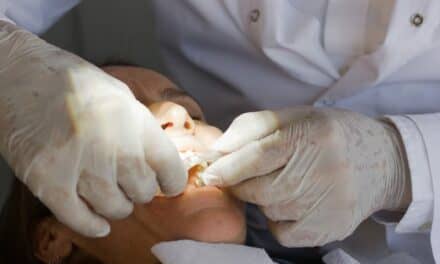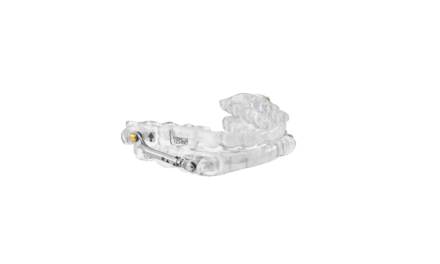Mailed brochures and email check-ins boosted wear at 1, 3, and 6 months.
By Sree Roy
Conversations about patient adherence to sleep apnea therapy typically focus on the most commonly prescribed treatment—CPAP. But when student Victoria Sheets, DDS, MS, was given the option to continue a research project from a graduating co-resident on adherence to oral appliance therapy, she was very much on board. “My mom actually has (undiagnosed) sleep apnea and even though I’ve told her for years to get tested, she denies she needs treatment. By becoming more involved in this project, I wanted to leave everything about the disease and treatment possibilities to help educate her more,” says Sheets, who attended The Ohio State University College of Dentistry.
The study divided new oral appliance users into two groups: routine care (control) and experimental. The experimental group received additional printed material and communication monthly. Using Braebon’s DentiTrac microsensor, she and co-investigators compared adherence at 1, 3, and 6 months. The research, which was funded by a grant from the American Sleep Medicine Foundation and the American Academy of Dental Sleep Medicine (AADSM), as well as received the donated microsensors, won an AADSM Student Research Award for 2020. The abstract is published in the April 2020 edition of the Journal of Dental Sleep Medicine.
For the experimental group, “the printed material consisted of 4 brochures covering different aspects of sleep apnea mailed out at 6-week intervals,” Sheets says. “The brochures were all from the American Academy of Sleep Medicine and discussed non-CPAP treatment for sleep apnea, snoring and sleep apnea, sleep apnea and physical health, and how to sleep better.
“Every patient in the experimental group actually chose their monthly form of communication to be email based. I would personally email each patient and ask if they were having any troubles that I could assist them with and remind them that they should be wearing their appliance for the prescribed 4 hours minimum per night. If they had missed a follow up appointment I would remind them of that and ask if they needed help rescheduling that.”
At one month, the control group had worn the oral appliance an average of 4.9 hours/night compared to the experimental group’s average of 6.1 hours/night. “We do believe that this is clinically significant. Previous studies have reported that as little as 1 hour more of wear per night has had significant results for CPAP patients,” Sheets says. Data for 3- and 6- months also supported the effectiveness of the experimental protocol.
Sree Roy is editor of Sleep Review.
Reference
Sheets V, Johnston WM, Murphy S, et al. Increasing adherence to mandibular advancement devices for OSA: 1-month results. JDSM. 10 Apr 2020;7.2:Abstract #004.





